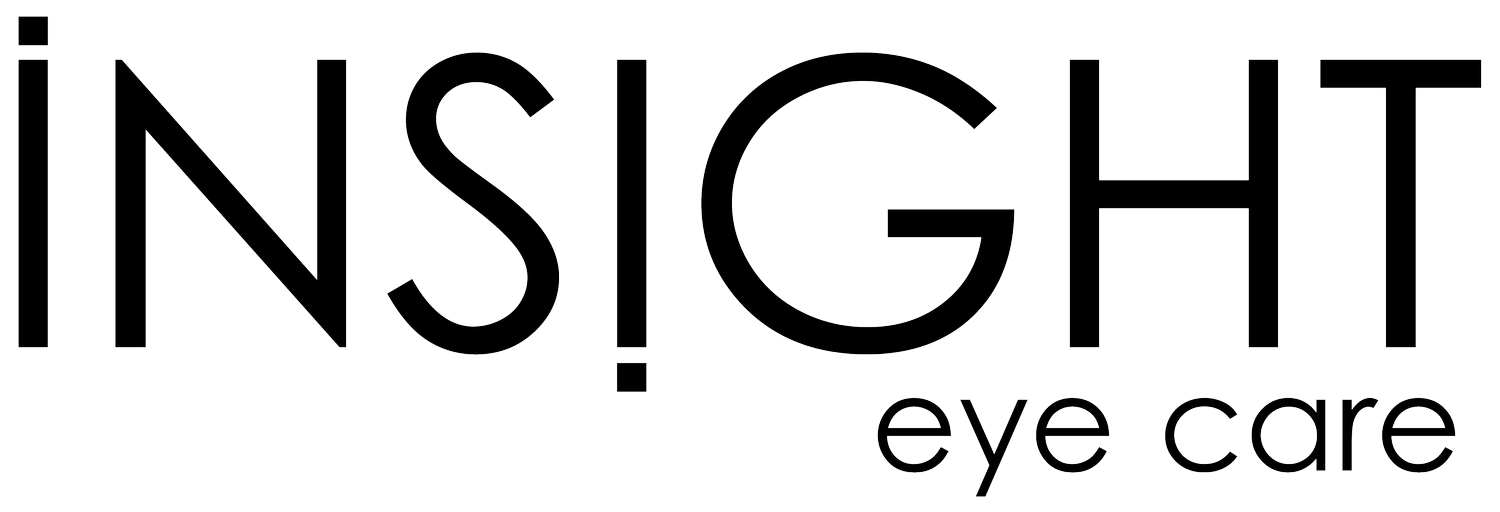slowing the progression of myopia
-

Myopia: Prevention and Detection
The prevalence of near-sightedness is increasing around the world. Let’s take a closer look at myopia together.
-

Myopia Management
Our knowledge of myopia progression is expanding, and so are the treatment options available.
-

Frequently Asked Questions
All questions are important when it comes to treating your child’s vision and eye health.
Myopia: Prevention and Detection
Myopia, or nearsightedness, is a visual condition in which people are unable to see far-away objects clearly. People with myopia will need vision correction in the form of either glasses or contact lenses to be able to see clearly in the distance.
Higher levels of myopia occur when the length of the eye, the axial length, is too long. The longer the axial length of the eye, the higher the risk for certain ocular diseases such as retinal detachment, myopic maculopathy, cataracts and glaucoma.
The onset of myopia typically starts during childhood and progresses throughout the teenage years. While currently there is no cure for myopia, the good news is that there is a range of preventative methods that can effectively manage myopia progression. Some of these methods, such as healthy visual habits, are easy to implement starting right at home! Other methods include prescribed treatment interventions like specialized glasses and/or contact lenses.

Healthy Visual Habits
Take breaks!
Remember to take frequent breaks from near work- that includes reading, computer and tablet time.
Get outside!
Increased time outdoors delays the onset and may help slow the progression of myopia.
Encourage at least 2 hours per day outdoors and remember to be sun smart!
Balance near work!
Encourage less than 2 hours of near work after school and hold reading material >30-40cm from your eyes.
Myopia Detection
Children 19 years of age and younger qualify for annual full eye examinations covered by OHIP. During the full eye examination, your optometrist may detect risk factors for myopia or discover that your child has developed a myopic refractive error. We recommend that your child have a full eye examination prior to a myopia management consultation.
During the myopia management consultation, the optometrist will check your child’s vision, refractive error (myopia, hyperopia, astigmatism), axial length (the length of their eye), and perform multiple tests to determine their candidacy for myopia management. At Insight Eye Care, we measure the axial length of the eye by using an instrument called MYAH.
Vision Correction Is Not Prevention
Although traditional glasses and contact lenses correct blurry vision, they do not stop the progression of myopia. In other words, your child’s vision can get worse over time without proper management. The goal of myopia management is to slow the progression of myopia using treatments that are supported by scientific research and safe for your child.

Myopia Management
While there is no way to completely stop or reverse myopia progression, there are various treatment options to slow the rate of progression.
At Insight Eye Care, we view people as inherently unique, so there is no one treatment that fits all. We are excited to offer a range of myopia management options to our patients:
-
Soft, daily disposable contact lenses that correct your child’s refractive error and have been clinically proven to slow the progression of myopia in age-appropriate children.
READ: MiSight ® Contact Lens
SHOP: MiSight ® Contact Lens
READ: Abiliti™ Contact Lens
SHOP: Abiliti Contact Lenses
WATCH:How to Insert and Remove your MiSight® 1 Day Contact Lenses
-
At Insight Eye Care, we offer two different myopia management lens designs. The spectacles are designed for full-time wear and have been proven to slow the progression of myopia.
WATCH: MiyoSmart Glasses
WATCH: Stellest Glasses
-
Orthokeratology, or corneal refractive therapy, refers to the practice of wearing corneal gas-permeable contact lenses at nighttime. These lenses are designed to temporarily treat your child's refractive error throughout the day. This form of refractive correction has been shown to be effective as a means of myopia control.
MYAH is also used for measurements during orthokeratology. Corneal topography measurements are essential in optimizing and monitoring the fit of orthokeratology lenses. These measurements provide a true representation of the treatment effect on the cornea while the lenses are worn at night.
READ: 5 Reasons to Try Ortho-K
-
Atropine is a prescription eye drop that temporarily dilates the pupil and limits accommodation. Low doses of atropine have been shown to help reduce the progression of myopia. The drop is compounded at a local pharmacy and one drop is instilled in each eye once per day.
READ: Easy Eye Drops for Kids
-
During the myopia management consultation, your optometrist will perform tests that help determine your child’s eligibility for treatment and discuss options for myopia management.

Frequently Asked Questions
-
A myopia management consultation is approximately one hour long. During the assessment, the optometrist will check your child’s vision, refractive error (myopia, hyperopia, astigmatism) as well as multiple tests to determine if they are a candidate for myopia management.
Axial length/Corneal Topography (MYAH): The optometrist will measure the length of your child’s eyes from the cornea (front surface) to the retina (the tissue at the back of the eye). They will also perform corneal topography which maps the surface of the eye. The tests are quick, non-invasive and help in the planning and monitoring of your child’s treatment.
Myopia Management Binocular Vision Workup: The optometrist will assess the coordination of the eyes (binocular vision) and focusing skills.
Cycloplegic Examination: Eye drops will be used during the examination that temporarily dilate your child’s pupils and relax the muscles that are responsible for focusing. The refractive error will be checked again after the use of these drops to ensure the most accurate results are obtained. The optometrist will also check the health of your child’s eyes.
Retinal Photography and Optical Coherence Tomography (OCT): A specialized camera is used to obtain non-invasive baseline images of your child’s fundus (back of the eye).
The optometrist will discuss options and make a recommendation for the best method for myopia management for your child considering their results, their lifestyle, and the best plan for you as a family.
-
The frequency of follow-up assessments vary depending on the type of treatment recommended and how your child’s eyes are responding to treatment. Once a treatment plan has been successfully established, your child will have an assessment every 3 to 6 months. The frequency may be increased if there are modifications required to their plan.
-
Axial length refers to the length of your child’s eyes from the cornea (front surface) to the retina (the tissue at the back of the eye). It is an important metric in measuring the progression of myopia and determining the effectiveness of your child's treatment plan. An effective management approach will slow down the rate of axial length elongation and reduce their risk of associated ocular diseases.
-
Corrective laser surgery can be safely performed for patients 18 years or older, who have healthy eyes and have a stable refractive error for at least two years. During laser eye surgery, the laser reshapes and removes a precise amount of tissue from your cornea.
The higher the myopia, the more corneal tissue must be removed. Proper myopia management will reduce the severity of the disease and the strength of the prescription later in life, thus increasing the success of LASIK later on.
-
Contact lenses are safe for use and have been approved for children. Just like any other medical device, they require proper handling and care and compliance with the suggested wearing time. The optometrist will guide your child through the handling techniques and ensure that the fit of the contact lens and the vision it provides, are safe for your child.
-
-
It was previously thought that the under-correction of myopia in spectacles would help slow its progression; however, more recent research has concluded that under-correction may actually stimulate and accelerate eye growth due to the blurred vision at various distances.
-
Adapting to myopia control spectacles can take one to two weeks. We recommend constant wear and avoiding sports during that period until your child is comfortable with their vision.
-
Multifocal/Dual Focus Soft Contact Lenses
Complaints of blurred vision
Mild risk of eye infections due to poor handling or wearing compliance
Orthokeratology
Initial discomfort – comfort may improve as your child adapts to the lenses
Mild risk of eye infection, so strong adherence to lens care regimen and remaining highly observant for signs and symptoms of infection are required
Peripheral haloes/glare in dim and dark environments
Spectacles
Blurred vision which is expected to subside within 1-2 weeks of wearing the glasses
Peripheral haloes/glare in dim and dark environments
Atropine Eye Drops
Some children may experience light sensitivity
Blurred vision at near
-
Myopia (nearsightedness). American Optometric Association. https://www.aoa.org/healthy-eyes/eye-and-vision-conditions/myopia?sso=y
Gifford KL, Richdale K, Kang P et al. IMI – Clinical Management Guidelines Report. Investigative Ophthalmology & Visual Science 2019;60:M184-M203.
Chamberlain P, Peixoto-de-Matos S, Logan NS et al.- A 3-year Randomized Clinical Trial of MiSight Lenses for Myopia Control. Optometry & Vision Science 2019;96(8):556-567.
Morgan IG, Wu PC, Ostrin LA, et al. IMI Risk Factors for Myopia. Invest. Ophthalmol. Vis. Sci. 2021;62(5):3. doi: https://doi.org/10.1167/https://doi.org/10.1167/iovs.62.5.3.6
CVI Data on file, 2022. SERE coverage of childhood myopia prescriptions with MiSight® 1 day for 104,810 eyes in Asia (China, Korea) and 116,336 eyes in Europe and USA aged 8-18 years.
Lee YC, Wang JH, Chiu CJ. Effect of Orthokeratology on myopia progression: twelve-year results of a retrospective cohort study. BMC Ophthalmol. 2017 Dec 8;17(1):243. doi: 10.1186/s12886-017-0639-4. PMID: 29216865; PMCID: PMC5721542.
TLC Laser Eye Centers FAQ. https://www.tlcvision.com/lasik-candidate/faqs/
MAYO Clinic LASIK Eye Surgery. https://www.mayoclinic.org/tests-procedures/lasik-eye-surgery/about/pac-20384774
Chung, K., Mohidin, N., O’Leary, D. J. Undercorrection of myopia enhances rather than inhibits myopia progression. Vision research, 2002. 42(22), 2555-2559.
Wildsoet CF, Chia A, Cho P et al. IMI – Interventions for Controlling Myopia Onset and Progression Report. Investigative Ophthalmology & Visual Science 2019;60:M106-M131.
Liu, YM and Xie P. The Safety of Orthokeratology – A Systematic Review. Eye Contact Lens 2016. 42(1): 35–42.






